Mother nature is home to a wide variety of flora and fauna, and with each passing year, mankind discovers even more. While some are incredibly common and spoken about in day-to-day life, others are rare, unique, and lesser-known. The word “plant” can encompass a wide variety of vegetation we find in the wild. For the sake of this list, we’ve broken it down into flowers, fruits, vegetables, and trees. Here are 25 of the most interesting plants in the world that have a common name that starts with the letter F.
Flowers That Start With F
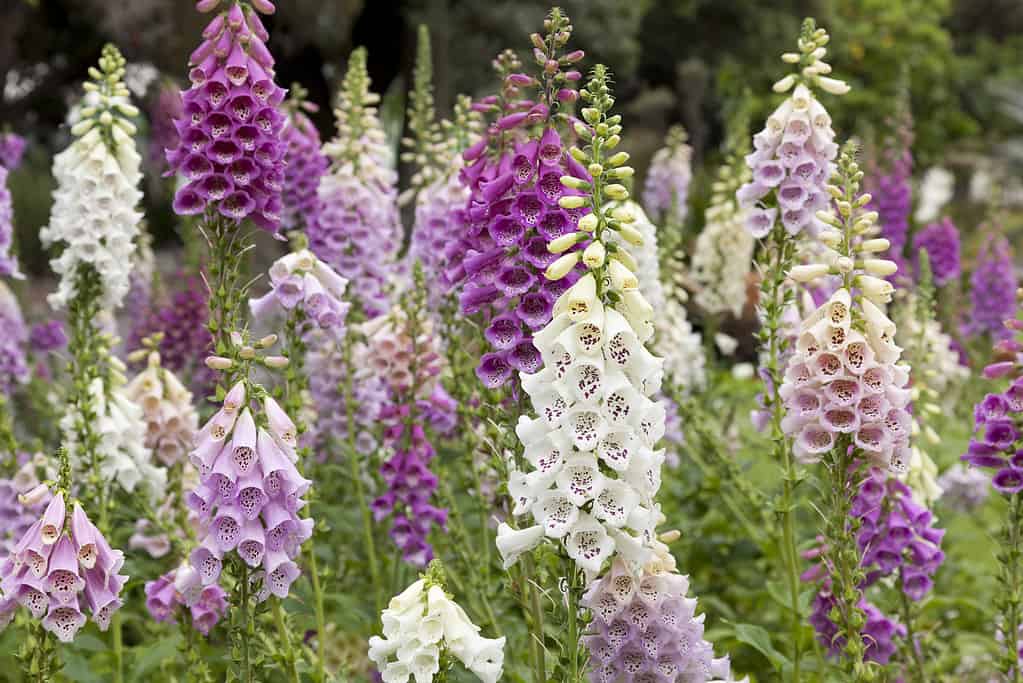
Foxgloves are a somewhat controversial flower.
©PicturePartners/iStock via Getty Images
Quite a few flowers across the world have common names that begin with the letter F. Here are a handful of the most iconic and unique among them.
Foxglove: These flowers have a dual nature: while some people think they represent playfulness and youth, others feel they symbolize deceit and trickery. However you feel, it’s hard to deny how eye-catching and beautiful these flowers are.
French Lavender: This plant belongs to the family Lamiaceae. Its scent has a calming effect, and its appearance brightens up any garden it grows in.
Forget-Me-Not: These delicate blooms have an adorable story of how they received their name. Fairfax Gardening states that “A knight and his lady were walking along the Danube River, and he picked some blue flowers by the river for his love. He fell in and was swept away. He tossed the flowers to her and cried out, ‘Forget-Me-Not!’ It is said she wore the flowers in her hair until she died. In medieval times, ladies wore these flowers to show their faithfulness and enduring love.”
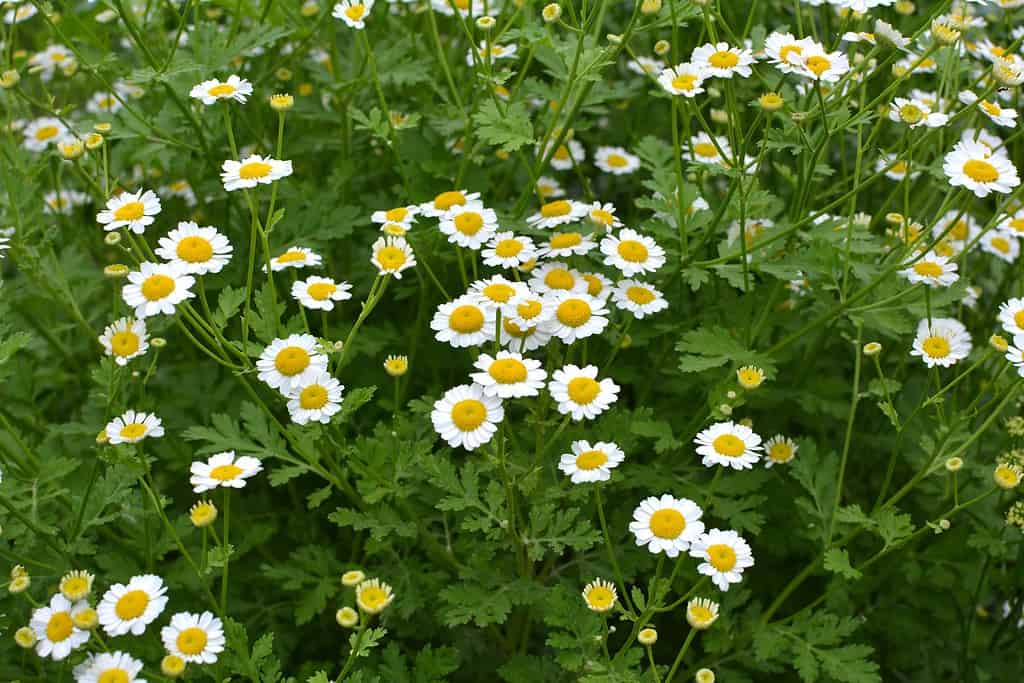
Feverfew flowers are medically significant.
©Orest lyzhechka/Shutterstock.com
Forsythia: If you’ve been looking to add a pop of color to your garden, look no further than forsythia. This bright yellow bush grows quickly and blooms well as long as gardeners prune it properly.
Fairy Duster: While many flowers bloom during the spring and summer, the fairy duster stands out among the rest due to its late winter bloom time. They belong to the family Fabaceae.
Feverfew: Feverfew flowers belong to the same family as daisies, Asteraceae. According to the National Institute of Health, they have been “traditionally used for the treatment of fevers, migraine headaches, rheumatoid arthritis, stomach aches, toothaches, insect bites, infertility, and problems with menstruation and labor during childbirth.”
Vegetables That Start With F

Fiddleheads are an underrated plant that begins with the letter F.
©Brent Hofacker/Shutterstock.com
Vegetables can be a divisive food: many people either love them or can’t stand them. However you feel, it’s impossible to deny that many vegetables offer a wealth of health benefits, and some are quite delicious.
Fennel: This vegetable has a unique flavor that some people just can’t get enough of. Benefits associated with consuming fennel are improved digestion and circulation and decreased inflammation.
Fava Beans: These beans belong to the family Fabaceae, which includes lentils, peas, and soybeans. Fava beans are also sometimes referred to as broad beans.
Fiddleheads: Have you ever heard of fiddlehead ferns? While this vegetable isn’t the most popular, it has a small but dedicated audience who praise it for its flavor and health benefits. They are sometimes referred to as ostrich ferns.
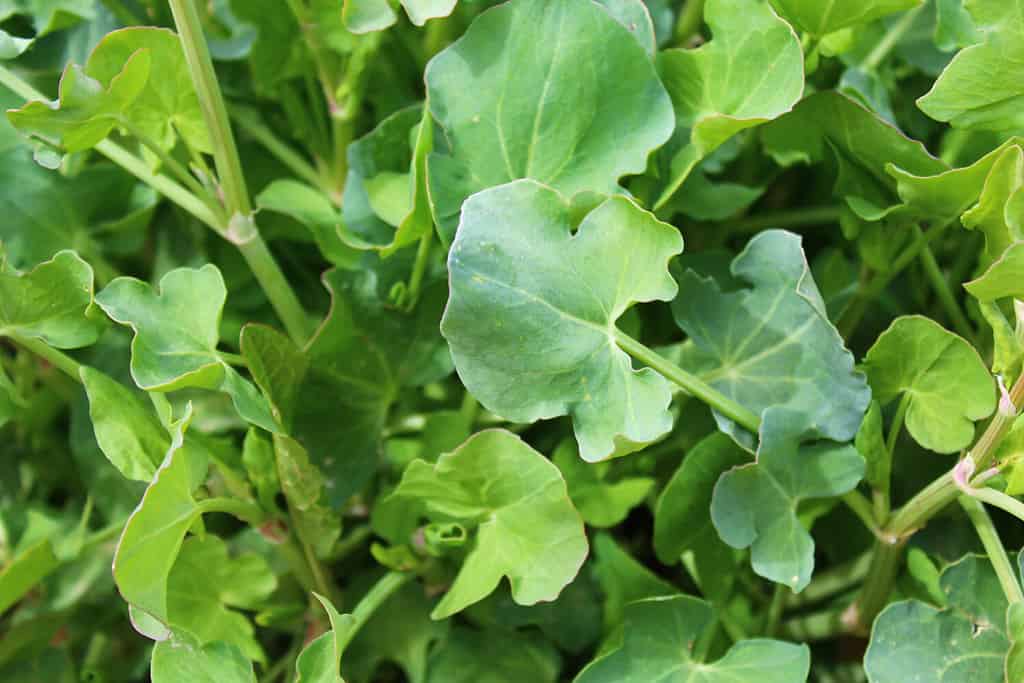
French sorrel is a very nutritious plant that begins with the letter F.
©Martina Unbehauen/Shutterstock.com
Flat Beans: Flat beans offer individuals a variety of health benefits, as they are packed with nutrients such as Vitamins A, C, and K and are full of antioxidants.
French Sorrel: This diverse vegetable has a lemony flavor and can be prepared in a number of different ways. Chefs enjoy using French sorrel in salads and sauces.
Frisee: This vegetable is also sometimes referred to as “curly endive.” It is also a popular component in a variety of salads. People describe the taste as aromatic, bitter, and spicy.
Fruits That Start With F
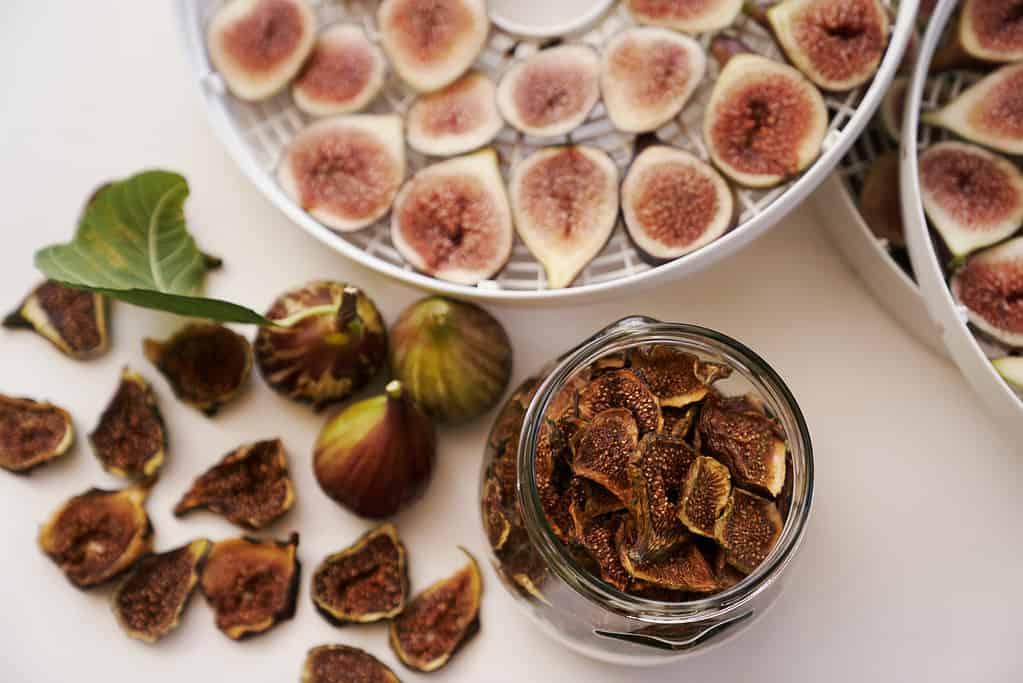
Figs trees are native to the Mediterranean.
©Nadtochiy/iStock via Getty Images
While some fruits are quite common, others are seldom available in the average market. Here are some unique and delicious fruits from all across the globe that start with the letter F.
Finger Lime: We’ve all seen limes before, but finger limes are slightly different. Nicknamed the “caviar lime,” these fruits grow in elongated pods that contain small beads that burst with lime flavor. The lime pearls inside this fruit are commonly used as a topping for tacos, nachos, and salads.
Figs: This fruit has been a staple throughout history, and people from ancient times loved it just as much as we do today. This fruit belongs to the family Moraceae and is rich in antioxidants, fiber, and calcium.
Fuji Apple: Among all apples, the Fuji is one of the most popular varieties. Although this apple is a cross-product of two American apples, the Red Delicious and Rawls Jennet, it actually originated in Japan near Fujisaki, which is how it got its name.
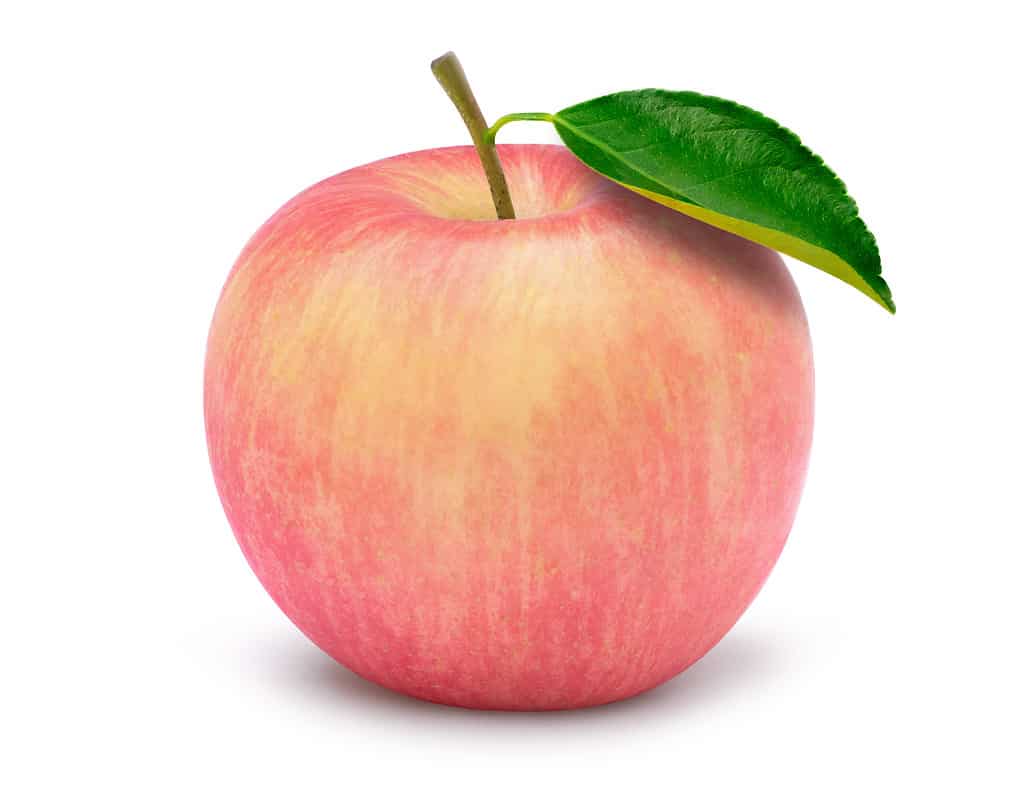
Fuji apples are famous for their sweet taste and crisp texture.
©Everyday better to do everything you love/iStock via Getty Images
Feijoa: If you’re feeling adventurous, the feijoa might be the perfect fruit for you. While this fruit has a melon-like appearance, many people describe the taste as a pleasant blend of pineapple, strawberry, and guava.
Florida Cherry: Florida cherries have several nicknames such as cayenne cherries, Brazillian cherries, and Surinam cherries. These small red fruits belong to the family Myrtaceae and have a sour, bitter flavor that some describe as an acquired taste.
Farkleberry: These small, dark purple berries belong to the family Ericaceae. These berries grow from small shrubs and bushes. Although they are edible, they have a somewhat gritty texture which makes them an unpopular choice for human consumption.
Trees That Start With F
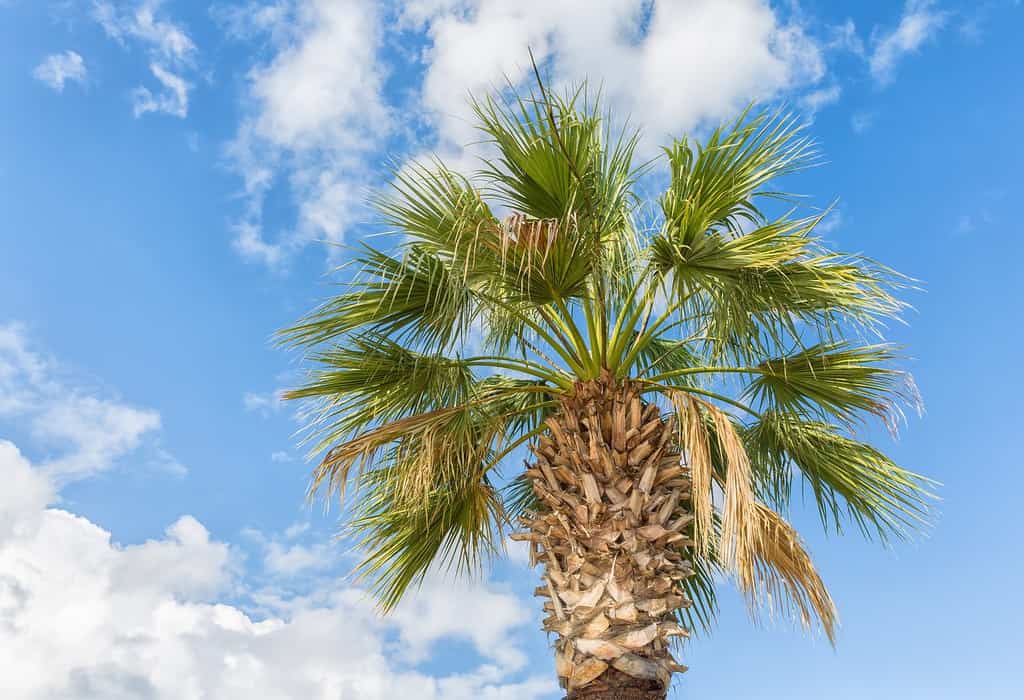
Fan palms prefer very sunny locations.
©Mark Godden/Shutterstock.com
There are countless different trees across the globe, and many of the most interesting have common names that begin with the letter F.
Fan Palm: The title “fan palm” is an umbrella term that describes a variety of fan palm trees. Some of these are the Mexican fan palm, the European fan palm, and the Chinese fan palm. These trees are quite showy, and their broad leaves elevate the atmosphere of any location where they’re planted.
Fir: Similar to the term “fan palm,” the word “fir” describes several trees that belong to the genus Abies. These hardy trees grow incredibly tall and some can live for hundreds of years.

On average, fever trees grow to be between 50 and 80 feet tall.
©Rini Kools/iStock via Getty Images
False Cypress: These slow-growing trees are popular for use in landscaping due to their hardiness and attractive appearance. According to the North Carolina Extension Gardener Plant Toolbox, “These trees are low maintenance and tolerate full sun to part shade, preferably in moist, well-drained soil. Moderate pruning will help maintain its conical form and ethically pleasing shape.”
Fever Tree: When you hear the term “fever tree,” your mind might wander to the rock band or the drink. However, the fever tree itself belongs to the family Fabaceae. This tree is native to Africa and gets its name from the location in which it grows. These trees commonly grow in swamps, which are breeding grounds for fevers such as Malaria.
Other Plants That Start With The Letter F
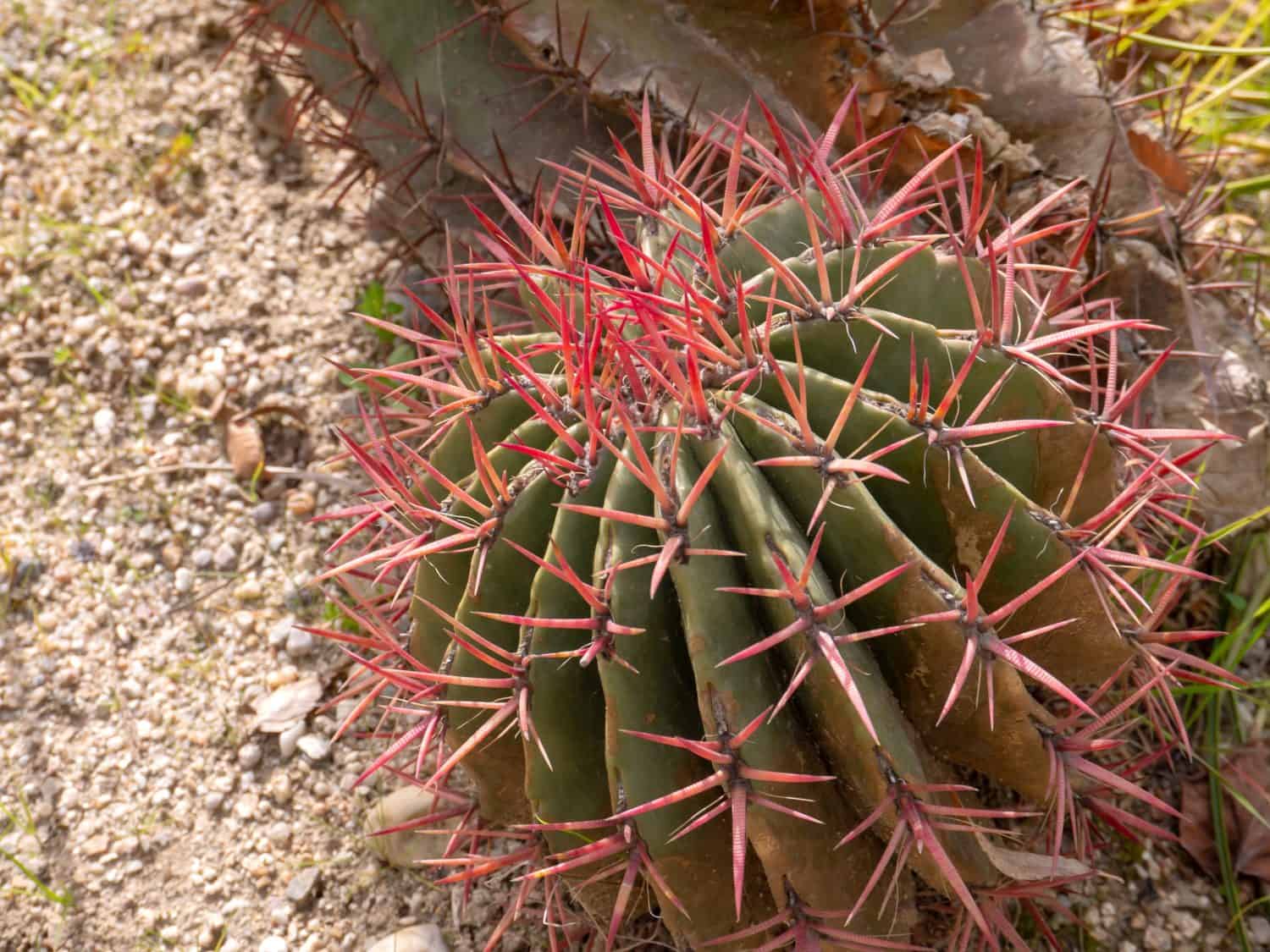
The fire barrel cactus is native to Mexico.
©Svetlana Zhukova/Shutterstock.com
Here are some noteworthy plants that start with the letter F that don’t quite fit into any of the above categories.
Fire Barrel Cactus: This cactus was named after the large red spikes that protrude from its surface and give it an appearance similar to flames.
Foxtail Cactus: This native North American cactus belongs to the genus Coryphantha. It blooms with attractive green, yellow, and pinkish flowers throughout the spring and summer months.
Fasciated Haworthia: Unlike some other plants we’ve discussed today, Fasciated Haworthia is actually quite scarce. This succulent boasts densely packed leaves that grow slowly. If properly cared for, many can live for half a century or more.
Summary Table of 25 Plants That Start With F
| Common Name | Scientific Name |
|---|---|
| Foxglove | Digitalis |
| French Lavender | Lavandula stoechas |
| Forget-Me-Not | Myosotis |
| Forsythia | Forsythia |
| Fairy Duster | Calliandra eriophylla |
| Feverfew | Tanacetum parthenium |
| Fennel | Foeniculum vulgare |
| Fava Beans | Vicia faba |
| Fiddlehead | Matteuccia struthiopteris |
| Flat Beans | Phaseolus vulgaris |
| French Sorrel | Rumex scutatus |
| Frisee | Cichorium endivia var. crispum |
| Finger Lime | Citrus australasica |
| Fig | Ficus carica |
| Fuji Apple | Malus domestica |
| Feijoa | Acca sellowiana |
| Florida Cherry | Eugenia uniflora |
| Farkleberry | Vaccinium arboreum |
| Fan Palm | Chamaerops |
| Fir | Abies |
| False Cypress | Chamaecyparis |
| Fever Tree | Vachellia xanthophloea |
| Fire Barrel Cactus | Ferocactus gracilis |
| Foxtail Cactus | Escobaria |
| Fasciated Haworthia | Haworthia fasciata |
The photo featured at the top of this post is © PicturePartners/iStock via Getty Images
Thank you for reading! Have some feedback for us? Contact the AZ Animals editorial team.






